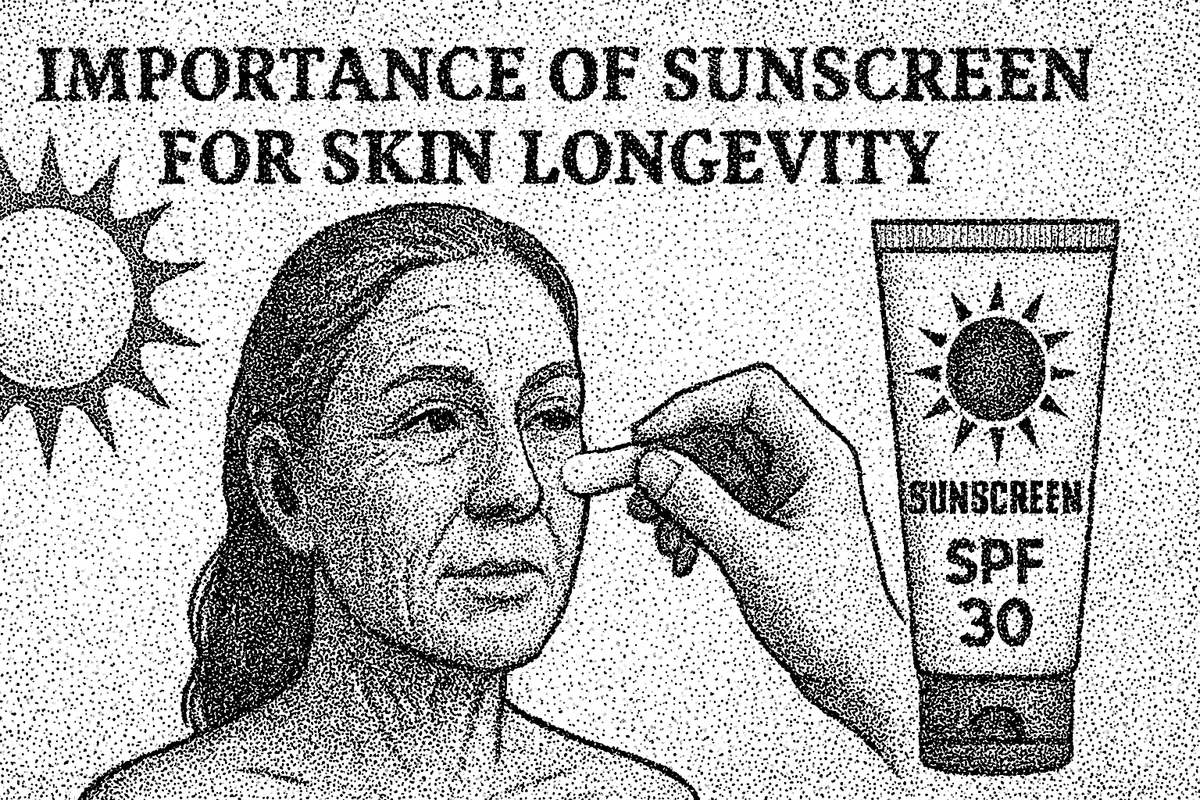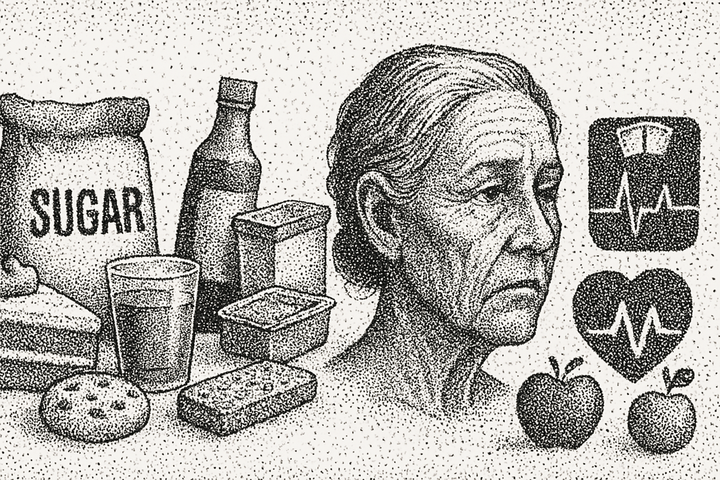Slather Up for Eternal Youth: Why Sunscreen is Your Skin’s BFF

Skin longevity refers to maintaining healthy, youthful skin over time, and sunscreen is a cornerstone of this goal. UV radiation from the sun, comprising UVA and UVB rays, poses significant threats. UVA rays penetrate deeply, contributing to premature aging, wrinkles, and skin cancer, while UVB rays cause sunburn and are also linked to skin cancer. Research, such as studies from the Skin Cancer Foundation (Sunscreen FAQs), highlights that daily sunscreen use can reduce squamous cell carcinoma risk by about 40% and melanoma risk by 50%, emphasizing its role in preventing long-term damage.
The necessity of sunscreen is underscored by its ability to block these rays, with broad-spectrum products protecting against both types. This is particularly crucial in regions with high sun exposure, and even daily use is recommended year-round, as UV rays can penetrate clouds and windows, as noted by the American Academy of Dermatology (How to Select a Sunscreen).
Benefits of Sunscreen
The benefits of sunscreen extend beyond immediate protection, offering long-term advantages for skin health:
- Skin Cancer Prevention: Large randomized control trials, as cited in reviews like Review of Fate, Exposure, and Effects of Sunscreens in Aquatic Environments, show that regular use of high-SPF, broad-spectrum sunscreen reduces melanoma and keratinocyte carcinomas, as well as precancerous lesions like actinic keratoses. This is vital, given skin cancer is the most common cancer in the U.S., with estimates of 9,500 daily diagnoses.
- Premature Aging Reduction: UV exposure accelerates aging by damaging collagen and elastin, leading to wrinkles and age spots. Sunscreen helps prevent photoaging, with studies from The science of sunscreen noting its role in maintaining skin elasticity and appearance, especially for those seeking to ward off aging effects.
- Sunburn Prevention: Sunburn, caused primarily by UVB rays, is not only painful but increases future skin cancer risk. Sunscreen, when applied correctly, extends the time before burning occurs, with SPF indicating how much longer (e.g., SPF 30 theoretically allows 30 times longer before burning compared to unprotected skin).
These benefits are maximized when sunscreen is part of a comprehensive sun protection strategy, including seeking shade and wearing protective clothing, as recommended by the CDC (Sun Safety).
Types of Sunscreen
Sunscreen types differ in how they protect, and understanding these can help choose the right product:
- Chemical Sunscreen: These contain organic compounds like oxybenzone, avobenzone, octinoxate, octisalate, octocrylene, and homosalate, which absorb UV rays and convert them to heat. They are typically lighter and easier to apply, making them popular for daily use. However, concerns about systemic absorption have been raised, with FDA studies (Sunscreen: How to Help Protect Your Skin from the Sun) showing ingredients like oxybenzone detected in blood weeks after use. Despite this, the FDA and organizations like Cancer Council Australia (Are chemical sunscreens safe to use?) maintain they are safe, with ongoing research to clarify potential risks.
- Physical Sunscreen: Also known as mineral sunscreen, these use zinc oxide and titanium dioxide to reflect UV rays away from the skin. They are less likely to be absorbed, making them suitable for sensitive skin, as noted in The science of sunscreen. A drawback is the potential white cast, particularly on darker skin tones, which can affect cosmetic appeal, though formulations have improved.
Both types are regulated as over-the-counter drugs by the FDA, ensuring safety and efficacy, and the choice often depends on skin type and preference, with physical sunscreens preferred for environmental concerns like reef safety.
Amount of Sunscreen to Apply
Applying the correct amount is critical for achieving the labeled SPF protection, as most people under-apply, reducing effectiveness. Guidelines include:
- Face: A half teaspoon is recommended, equivalent to a nickel-sized dollop, ensuring coverage for the face and neck. This aligns with dermatologist advice from How Much Sunscreen Should You Use on Your Face?, emphasizing even application to prevent missed spots.
- Body: Approximately 1 ounce, or a shot glass full, is needed for full-body coverage, as suggested by the AAD (Ask the Expert: How Much Sunscreen Should I Be Using on My Face and Body?). This translates to two milligrams per square centimeter, ensuring adequate protection for exposed areas.
Reapplication is essential every two hours, or more frequently after swimming or sweating, to maintain protection, as water-resistant claims last 40 or 80 minutes, per FDA guidelines (Sunscreen: How to Help Protect Your Skin from the Sun).
Best SPF Number to Use
The SPF number indicates protection against UVB rays, with broad-spectrum ensuring UVA protection as well. Recommendations include:
- Minimum SPF: The AAD and FDA recommend SPF 30 or higher, blocking about 97% of UVB rays, as detailed in What Does the SPF Number on Sunscreen Mean?. This is sufficient for daily use, with studies showing it reduces skin cancer risk significantly.
- Higher SPF for Extended Exposure: For prolonged outdoor activities, SPF 50 is advised, blocking 98% of UVB rays, as per Ask the Expert: Does a High SPF Protect My Skin Better?. However, the difference is marginal, with SPF 100 blocking 99%, and higher numbers can create a false sense of security, leading to longer sun exposure without additional protective measures.
Broad-spectrum is crucial, as UVA rays contribute to aging and cancer, and products must pass FDA tests for this claim, as outlined in Sun protection factor (SPF): What is the best sunscreen?. The choice of SPF should also consider skin type, with lighter skin needing higher protection, and all skin tones benefiting from daily use, debunking myths that darker skin doesn’t need sunscreen.
Conclusion and Practical Tips
In conclusion, sunscreen is indispensable for skin longevity, offering protection against cancer, aging, and sunburn. Choose a broad-spectrum, SPF 30 or higher, water-resistant sunscreen, applying 1 ounce for the body and a half teaspoon for the face, and reapply every two hours. Combine with shade, hats, and clothing for comprehensive protection, especially during peak sun hours (10 a.m. to 4 p.m.). This approach, supported by research from the CDC, AAD, and FDA, ensures your skin remains healthy and youthful over time.
This table summarizes key actions, ensuring readers can easily reference essential practices for sun protection.
Key Citations
- Sunscreen FAQs from Skin Cancer Foundation
- How to Select a Sunscreen from American Academy of Dermatology
- Sun Safety from Centers for Disease Control and Prevention
- Sunscreen: How to Help Protect Your Skin from the Sun from U.S. Food and Drug Administration
- Ask the Expert: How Much Sunscreen Should I Be Using on My Face and Body? from Skin Cancer Foundation
- What Does the SPF Number on Sunscreen Mean? from Verywell Health
- Ask the Expert: Does a High SPF Protect My Skin Better? from Skin Cancer Foundation
- Sun protection factor (SPF): What is the best sunscreen? from Medical News Today
- The science of sunscreen from Harvard Health
- Are chemical sunscreens safe to use? from Cancer Council Australia
- How Much Sunscreen Should You Use on Your Face? from Healthline
- Review of Fate, Exposure, and Effects of Sunscreens in Aquatic Environments from National Center for Biotechnology Information




Comments ()